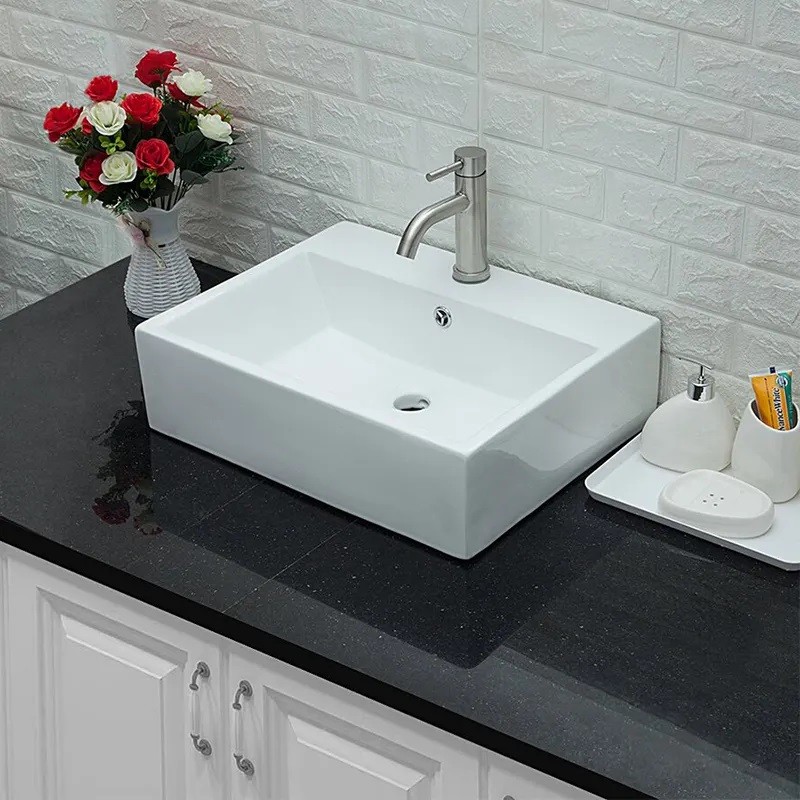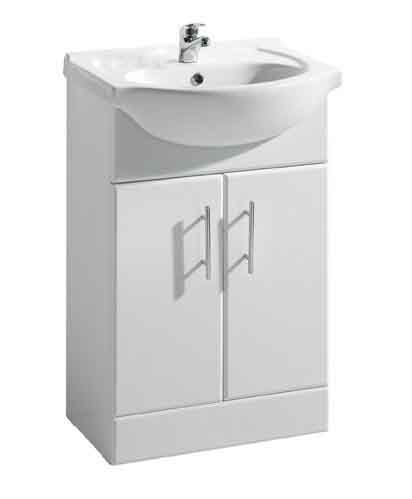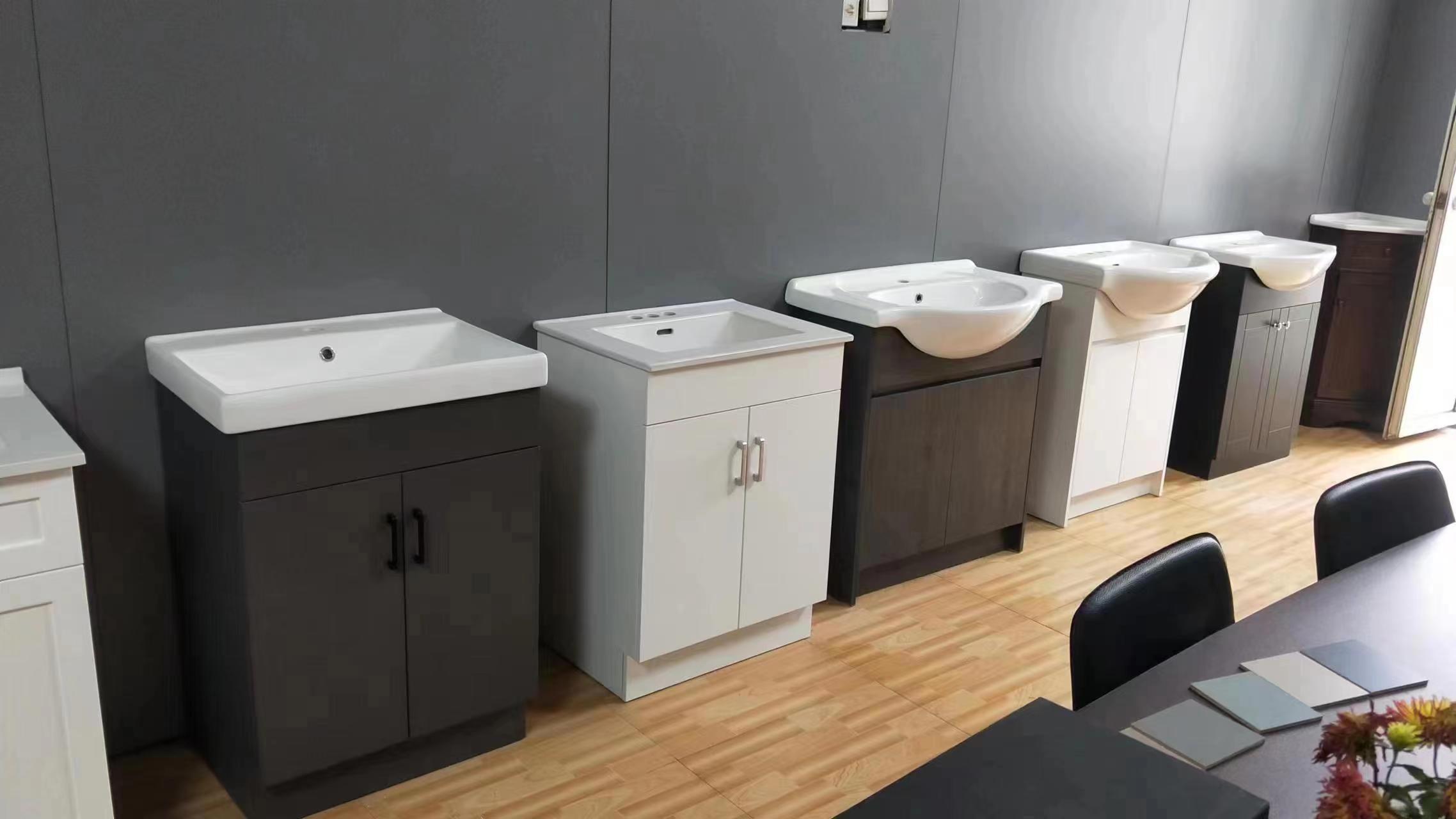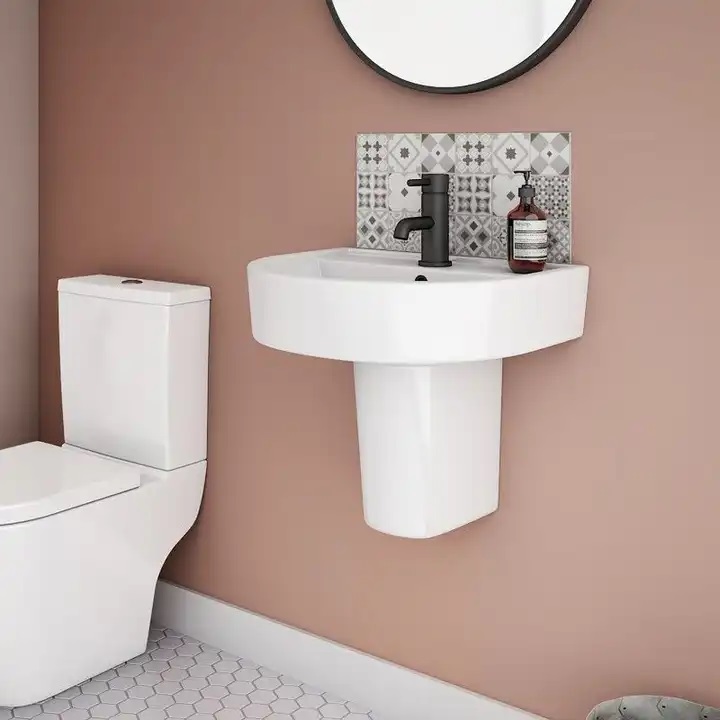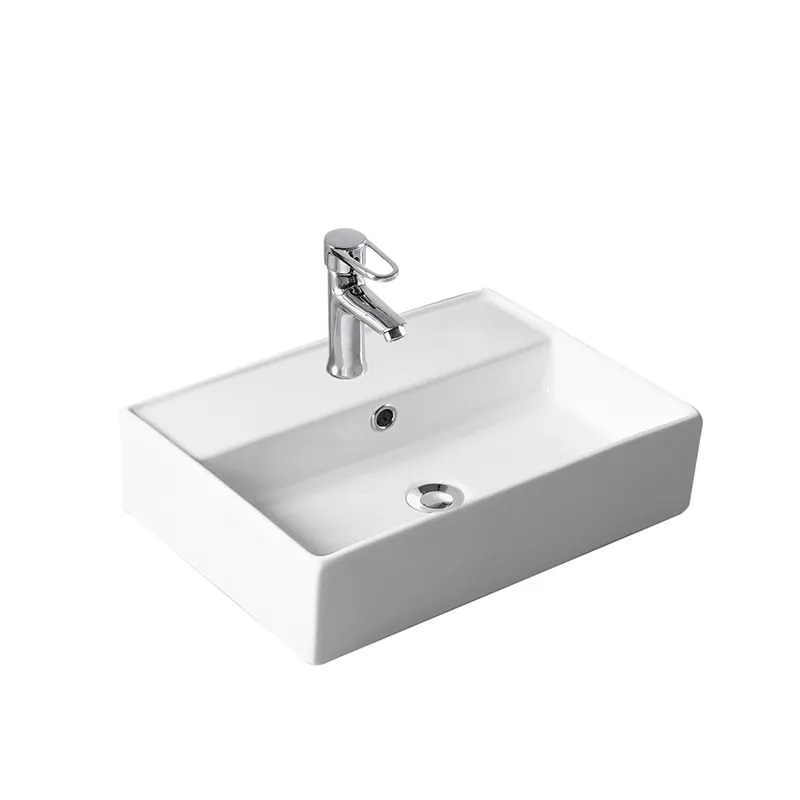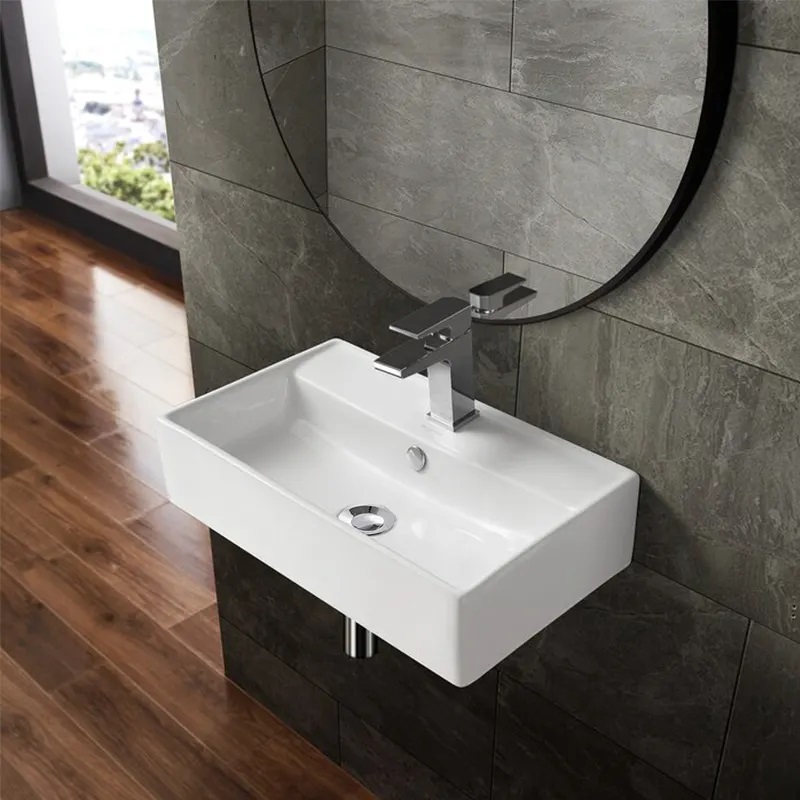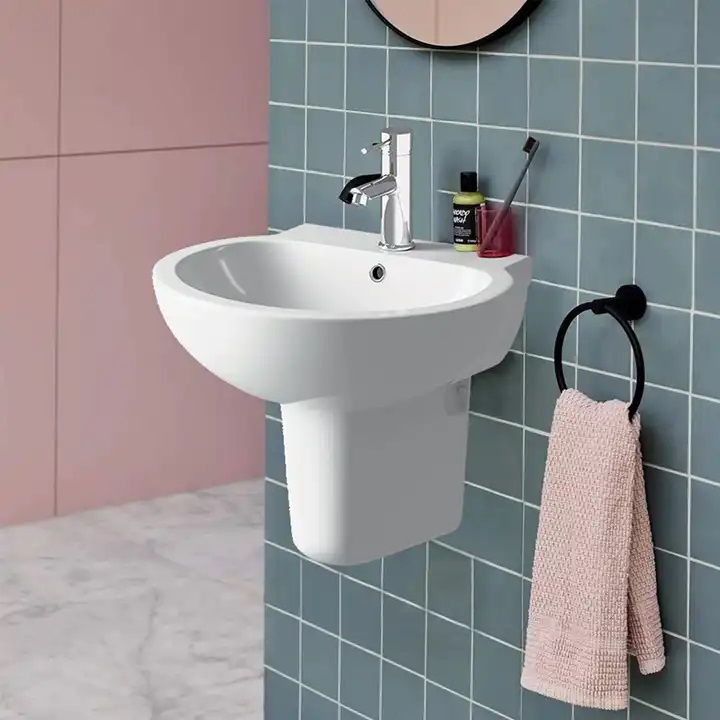LB81241
Related products
video introduction
PRODUCT PROFILE
Ceramic basins, with their elegant designs and unmatched durability, have become popular choices for bathrooms and kitchens around the world. However, like any other surface, ceramic basins require regular cleaning to maintain their beauty and functionality. In this article, we will delve into the art and science of washing ceramic basins, exploring effective techniques, recommended cleaning agents, and essential maintenance tips. Let's dive in!
I. Understanding Ceramic Basins:
Ceramic basins are made from clay and other natural materials that are molded and fired at high temperatures to create a strong, non-porous surface. This composition makes them resistant to stains and bacteria, but proper cleaning is still necessary to keep them in pristine condition.
II. Preparing for Cleaning:
Before proceeding with cleaning, ensure you have the following materials at hand:
- Protective gloves
- Soft brushes or sponges
- Mild detergent (preferably non-abrasive)
- Baking soda or vinegar (for deep stains)
- Clean, lint-free cloth
- Squeegee (optional)
III. Basic Cleaning Steps:
- Start by removing any loose debris or dirt from the basin's surface using a soft brush or sponge.
- Prepare a solution of warm water and a mild detergent suitable for ceramics. Avoid using abrasive cleaners or harsh chemicals that may damage the ceramic glaze.
- Moisten the soft brush or sponge in the cleaning solution and gently scrub the basin's surface, paying special attention to areas prone to stains and grime buildup.
- Rinse the basin thoroughly with clean water to remove any residual detergent.
- Wipe the surface dry with a clean, lint-free cloth to prevent water spots and streaks.
IV. Tackling Stubborn Stains:
For stubborn stains, consider the following methods:
- Baking Soda Paste: i. Mix baking soda with water to create a thick paste. ii. Apply the paste to the stained area and let it sit for a few minutes. iii. Scrub gently with a soft brush or sponge and rinse thoroughly.
- Vinegar Solution: i. Dilute vinegar with water in equal parts. ii. Apply the solution to the stained area and let it sit for a few minutes. iii. Scrub gently with a soft brush or sponge and rinse thoroughly.
Always test any cleaning solution or method on a small, inconspicuous area of the basin before applying it to the entire surface.
V. Maintenance Tips:
To keep your ceramic basin looking its best, consider the following maintenance tips:
- Avoid using harsh, abrasive scrubbers or cleaning pads that can damage the surface.
- Clean spills and stains promptly to prevent them from becoming stubborn and more difficult to remove.
- Regularly monitor and clean the drainage system to prevent clogs and mold growth.
- Avoid using acidic or abrasive cleaners, as they can erode the protective glaze of the basin.
- For hard water deposits, use vinegar or a commercial descaling product specifically formulated for ceramic surfaces.
VI. Conclusion:
Cleaning ceramic basins is an essential part of their maintenance and ensures their longevity and aesthetic appeal. By following the steps outlined above and adopting good maintenance practices, you can keep your ceramic basins looking beautiful and pristine for years to come. Remember, regular cleaning coupled with gentle, non-abrasive techniques is the key to preserving the natural beauty and integrity of ceramic basins in your home.
Product display




| Model Number | LB81241 |
| Material | Ceramic |
| Type | Ceramic wash basin |
| Faucet Hole | One Hole |
| Usage | Washing Hands |
| Package | package can be designed according to customer requirement |
| Delivery port | TIANJIN PORT |
| Payment | TT, 30% deposit in advance,balance against B/L copy |
| Delivery time | Within 45-60 days after received the deposit |
| Accessories | No Faucet & No Drainer |
product feature

THE BEST QUALITY

Smooth glazing
Dirt does not deposit
It is applicable to a variety of
scenarios and enjoys pure w-
ater of health standard, whi-
ch is hygienic and convenient
deepened design
Independent waterside
Super large inner basin space,
20% longer than other basins,
comfortable for super large
water storage capacity

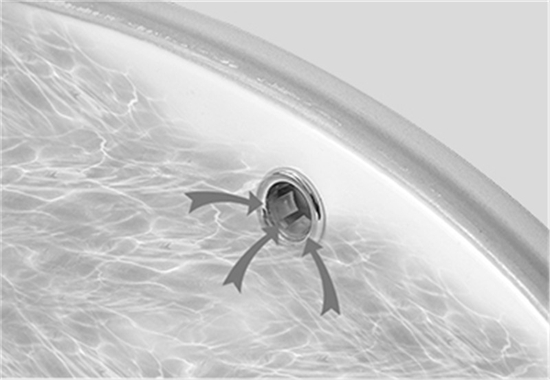
Anti overflow design
Prevent water from overflowing
The excess water flows away
through the overflow hole
and the overflow port pipeli-
ne of the main sewer pipe
Ceramic basin drain
installation without tools
Simple and practical not easy
to damage,preferred for f-
amily use,For multiple instal-
lation environments

PRODUCT PROFILE

lavatory sink wash basin
The lavatory sink, commonly referred to as a wash basin, is a fundamental fixture of the modern washroom. Providing a convenient and hygienic space for hand hygiene, teeth brushing, and facial cleansing, the lavatory sink plays a vital role in personal grooming routines. This article aims to explore the various aspects of lavatory sinks, including their history, types, materials, design considerations, and maintenance.
I. Historical Evolution of Lavatory Sinks To truly appreciate the significance of lavatory sinks, it is important to understand their historical evolution. The concept of sinks for personal hygiene dates back to ancient civilizations, where communal troughs or basins were used for communal cleansing rituals. Over time, advancements in plumbing and sanitation led to the development of individual sinks in homes and public spaces.
II. Types of Lavatory Sinks Lavatory sinks come in a variety of types, each catering to different needs and preferences. This section will explore some common types such as drop-in sinks, pedestal sinks, wall-mounted sinks, vessel sinks, and undermount sinks. Each type has its unique design features, installation requirements, and aesthetic appeal.
III. Materials Used in Lavatory Sinks Lavatory sinks are available in a range of materials, presenting options for both functionality and style. This section will discuss popular materials such as porcelain, ceramic, stainless steel, glass, natural stone, and composite materials like solid surface and quartz. The advantages and considerations associated with each material will be highlighted.
IV. Design Considerations for Lavatory Sinks When selecting a lavatory sink, several factors need to be considered, including size, shape, faucet compatibility, and storage options. This section will delve into these design considerations, emphasizing the importance of choosing a sink that harmonizes with the overall bathroom decor while ensuring practicality and functionality.
V. Maintenance of Lavatory Sinks Proper maintenance is crucial for extending the lifespan and preserving the aesthetics of lavatory sinks. This section will provide guidelines for regular cleaning, addressing different materials and finishes. Additionally, tips for resolving common issues like clogs, leaks, and stains will be covered to promote a well-maintained sink.
Conclusion The lavatory sink, or wash basin, has evolved from humble beginnings to become an essential fixture in the modern washroom. It serves as a practical and hygienic space for personal grooming activities. By understanding the historical evolution, various types, materials, design considerations, and maintenance requirements of lavatory sinks, individuals can make informed choices when it comes to selecting and caring for this vital bathroom feature. Whether in residential or public settings, lavatory sinks play a significant role in promoting cleanliness and enhancing the overall functionality and aesthetics of washrooms.
OUR BUSINESS
The mainly export countries
The product export to all of the world
Europe, USA, Middle-East
Korea, Africa, Australia

product process

FAQ
1.What is the minimum order quantity (MOQ) for your products?
Our MOQ varies depending on the product, but we strive to keep it as low as possible to accommodate the needs of our customers.
2.What is the lead time for production and delivery of the products?
Our lead time for production and delivery varies depending on the product and quantity ordered. We will provide you with an estimated lead time when you place your order.
3.What are the payment terms and methods accepted?
We accept the payment method of transfer. Our payment terms are typically 30% deposit and 70% balance payment before shipment.
4.What is the warranty period for your products?
Our products come with a standard warranty period of 3-5 years, depending on the product. We also offer extended warranty options for an additional fee.
5.Can you provide samples before placing a bulk order?
Yes, we can provide samples for most of our products. Please contact us for more information on our sample policy.
6.What is the shipping cost and how is it calculated?
Shipping costs vary depending on the destination, weight, and volume of the products ordered. We will provide you with a shipping quote when you consult.
7.Do you offer customization options for your products?
Yes, we offer customization options for many of our products. Please contact us for more information on our customization options.
8.What is your return policy in case of damaged or defective products?
We have a comprehensive return policy in place for damaged or defective products. Please contact us immediately if you receive a damaged or defective product.
9.Can you provide product certifications and test reports?
Yes, we can provide product certifications and test reports upon request. Please contact us for more information on our certifications and test reports.
10.What is the process for placing an order and tracking its status?
To place an order, simply contact us with your product requirements and we will provide you with a quote. Once you confirm your order, we will provide you with order process so you can track your order status.





